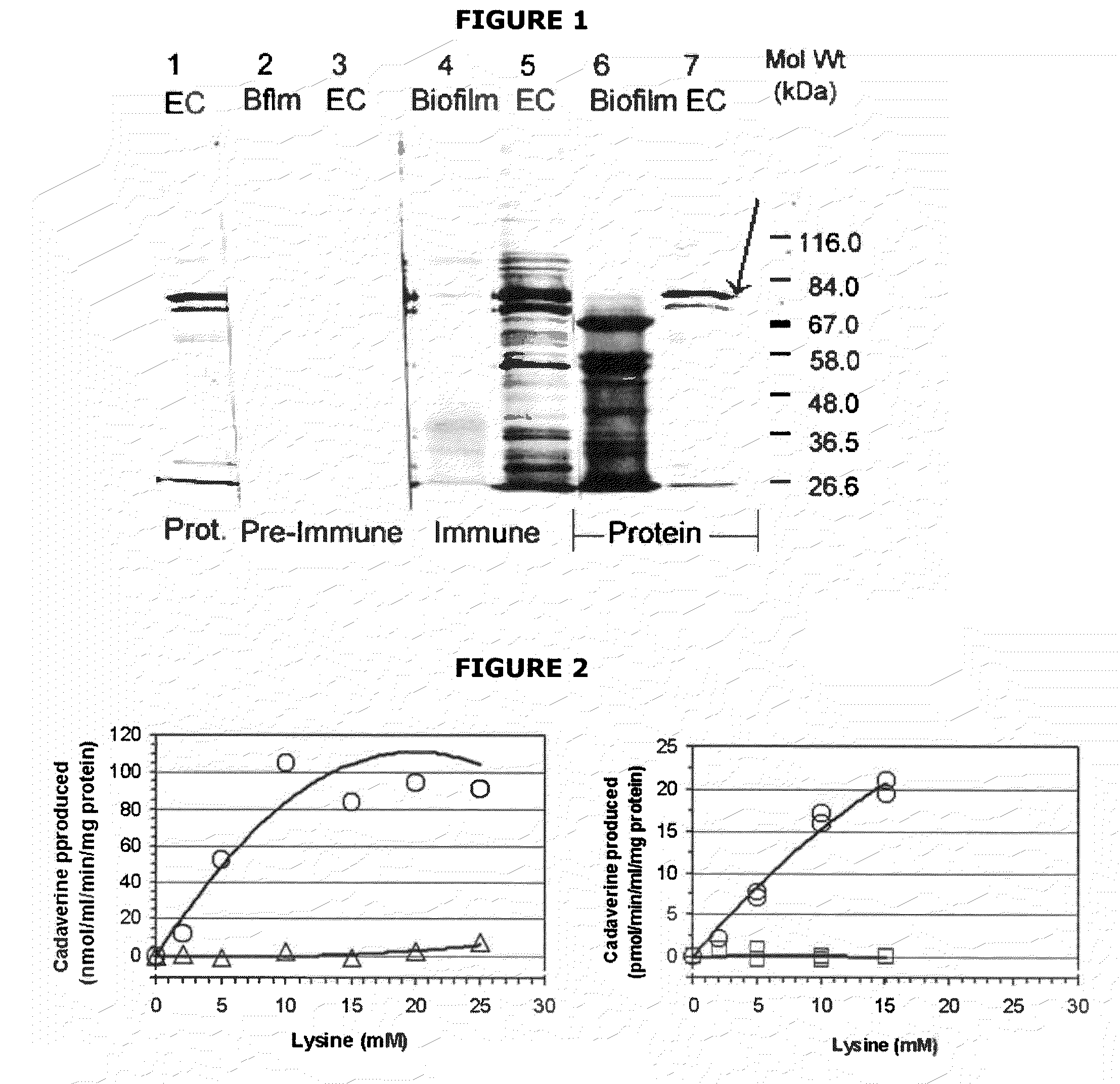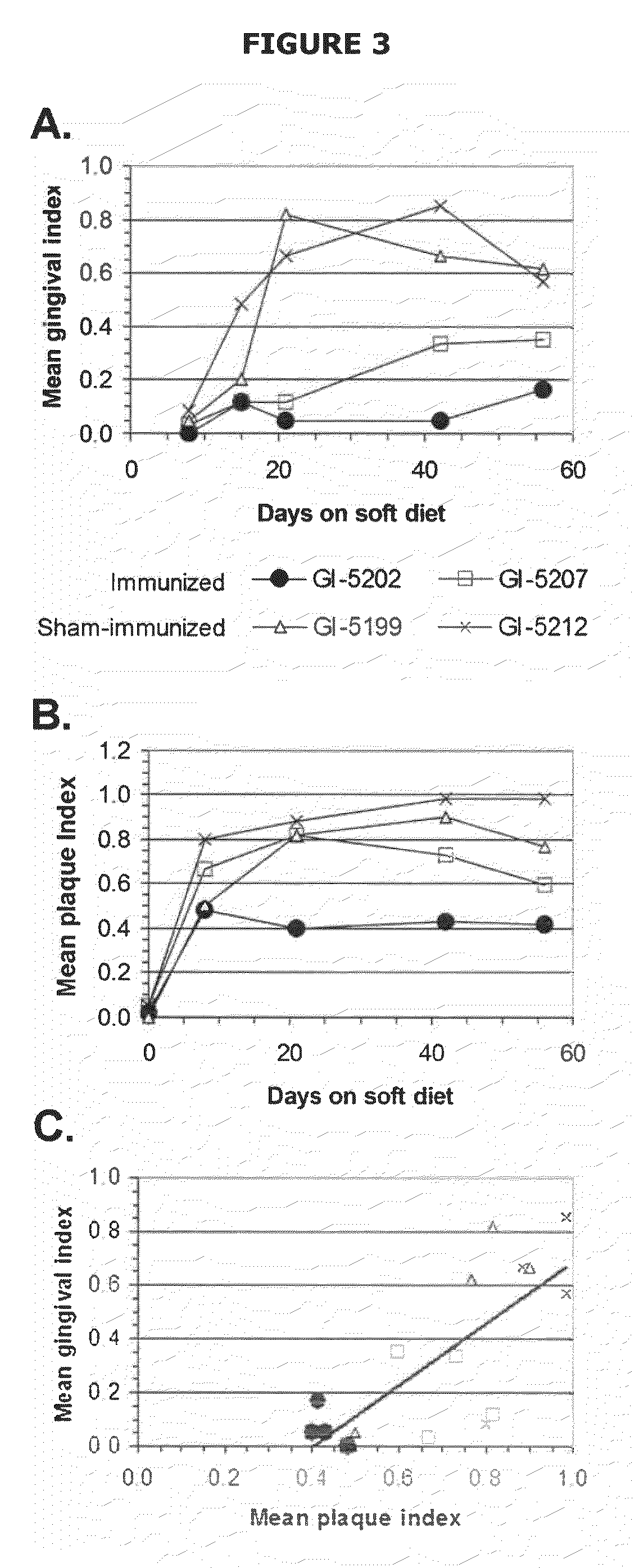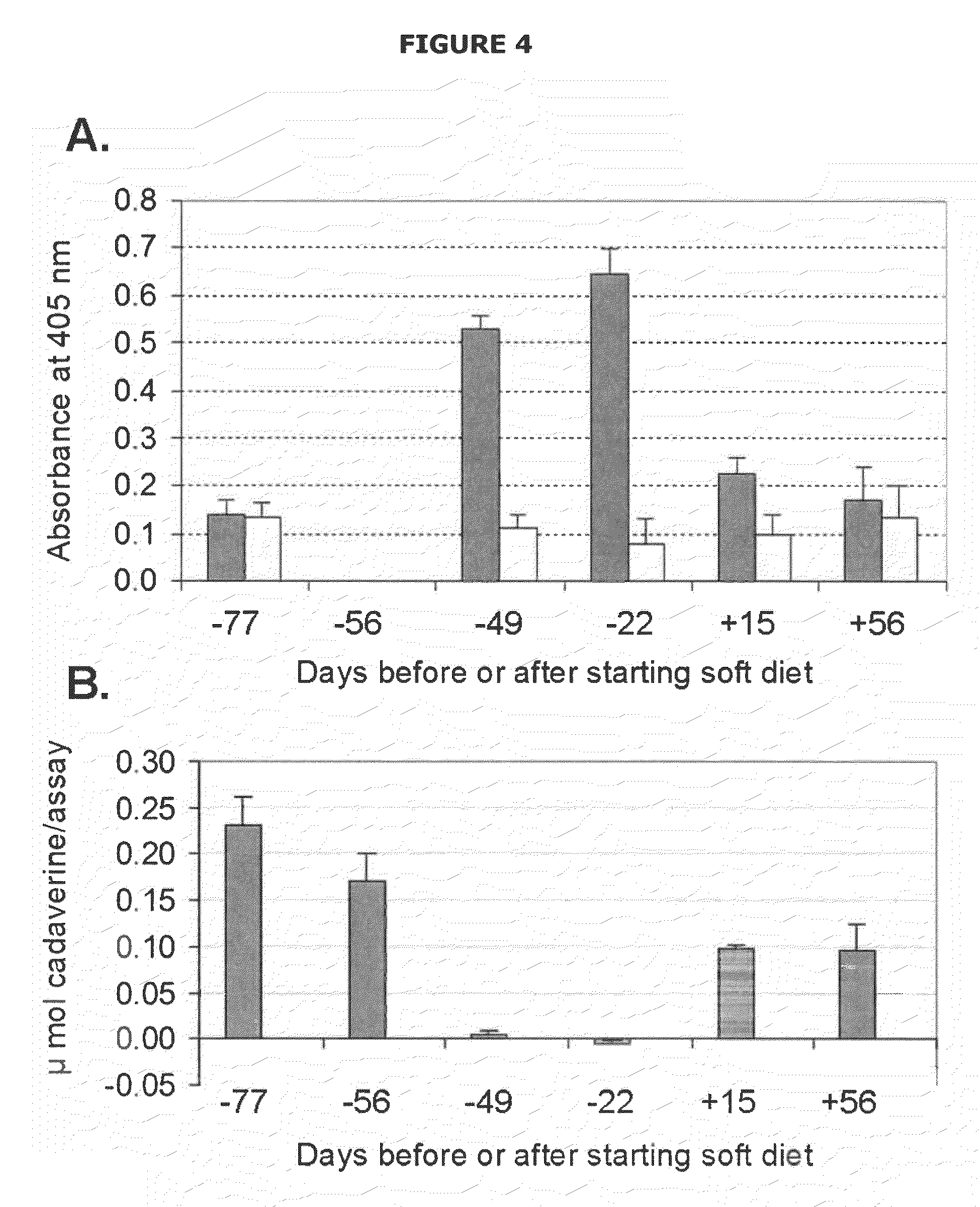Mutants of lysine decarboxylase, vaccines for periodontitis, and methods of use
a technology of lysine decarboxylase and lysine decarboxylase, which is applied in the field of lysine decarboxylase mutants, vaccines for periodontitis, and methods of use, can solve the problems of affecting the normal functioning of the body, affecting and affecting the health of the body, so as to inhibit the activity of lysine and reduce the development of periodontal diseases. , the
- Summary
- Abstract
- Description
- Claims
- Application Information
AI Technical Summary
Problems solved by technology
Method used
Image
Examples
examples
[0069]Examples are provided hereinbelow. However, the present invention is to be understood to not be limited in its application to the specific experimentation, results and laboratory procedures of the examples. Rather, the examples are simply provided as among several of many embodiments of the invention and are meant to be exemplary, not exhaustive.
example i
Producing Lysine Decarboxylase Inhibiting Antibodies
[0070]In one experiment, a cell-surface extract of E. corrodens containing about 25% lysine decarboxylase protein was used to immunize two goats (0.25 mg of protein from this E. corrodens extract after emulsification in 50% (v / v) Freunds complete adjuvant). The injections at 10-12 multiple subcutaneous sites on the back were repeated after 2 and 4 weeks using Freunds incomplete adjuvant. Goats were bled before immunization and two weeks after the last injection. The blood was clotted overnight at 0° C. to obtain pre- and post-immune serum. Enzyme activity was assayed in the presence or absence of 50% (v / v) serum, and E. corrodens extract was obtained as described elsewhere herein.
[0071]Controls (no serum or pre-immune serum only) gave an asymptotically increasing amount of cadaverine as the lysine concentration increased from 0 to 25 mM. Maximal catalysis was 80-120 nmol cadaverine / min / mg protein / ml for E. corrodens extract and 0.0...
example ii
Immunization of Dogs with Lysine Decarboxylase from E. Corrodens Protects from Gingivitis
[0072]A soft diet causes gingivitis to develop within 6 weeks in 1-2 year old beagle dogs that are free of gingivitis and periodontitis13, 14. This model of gingivitis development was used in a pilot study to determine whether immunization with lysine decarboxylase purified from E. corrodens indeed inhibits plaque and gingivitis development in small 1-year old beagle dogs.
[0073]E. corrodens type strain (ATCC 23834) was grown for 64 h in 3 liters of autoclave-sterilized trypticase soy broth (VWR-Scientific Products, Irving Tex.), supplemented with Millipore filter sterilized sodium bicarbonate (5 mg / mL), potassium nitrate (2 mg / mL) and hemin (0.5 mg / mL). After 65 h growth at 37° C., the cell pellet was obtained by centrifugation, washed twice with physiological phosphate buffered saline and weighed. About 2.0 g wet weight was obtained and 4-times that wet weight of 65 mM NaCl was added. The enzym...
PUM
| Property | Measurement | Unit |
|---|---|---|
| length | aaaaa | aaaaa |
| temperature | aaaaa | aaaaa |
| pH | aaaaa | aaaaa |
Abstract
Description
Claims
Application Information
 Login to View More
Login to View More - R&D
- Intellectual Property
- Life Sciences
- Materials
- Tech Scout
- Unparalleled Data Quality
- Higher Quality Content
- 60% Fewer Hallucinations
Browse by: Latest US Patents, China's latest patents, Technical Efficacy Thesaurus, Application Domain, Technology Topic, Popular Technical Reports.
© 2025 PatSnap. All rights reserved.Legal|Privacy policy|Modern Slavery Act Transparency Statement|Sitemap|About US| Contact US: help@patsnap.com



